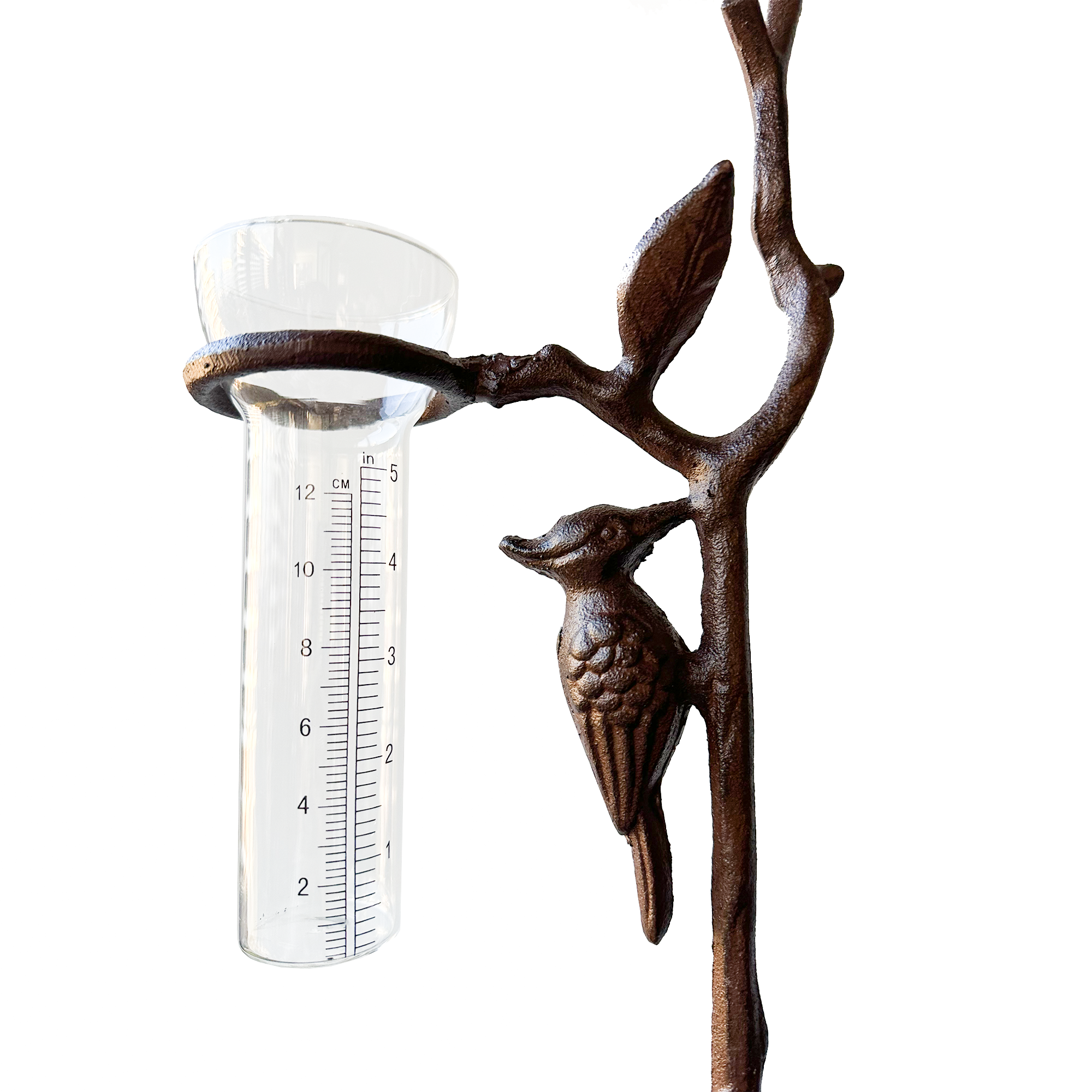How a Rain Gauge Can Boost Your Recognizing of Local Environment Patterns
How a Rain Gauge Can Boost Your Recognizing of Local Environment Patterns
Blog Article
Introducing the Scientific Research Behind Rain Determines: How These Devices Play a Crucial Function in Environment Research Study and Ecological Tracking
Rainfall determines, seemingly easy gadgets, hold a profound relevance in the world of environment research and environmental tracking. As we peel off back the layers of this scientific veil surrounding rain determines, we uncover a globe where accuracy, data accuracy, and careful observation assemble to unveil a deeper understanding of our transforming climate and its influence on the world.
Importance of Rain Scales
Rainfall evaluates play a vital duty in surveillance and measuring rainfall levels, offering essential data for climate study and analysis. These tools are fundamental in measuring the amount of rains that takes place in a details area over a certain duration. By gauging and gathering rainwater, rain gauges deal useful understandings right into the circulation and intensity of rainfall, assisting meteorologists, hydrologists, and climatologists in comprehending weather condition patterns and fads.
One of the vital factors why rain assesses are vital is their ability to give precise and local data. Unlike satellite or radar-based dimensions, which offer wider monitorings, rain determines offer specific info specific to the place where they are placed. This local data is crucial for various applications, consisting of flood projecting, drought surveillance, and water resource monitoring. Furthermore, long-term information accumulated from rain determines helps in assessing climate modification influences and patterns, adding dramatically to scientific research study and decision-making processes. Fundamentally, rainfall evaluates function as important devices in the area of meteorology and ecological scientific research, playing an essential function ahead of time our understanding of weather condition and environment characteristics.
Sorts Of Rainfall Scales

Functionality and Procedure
In the realm of environment study and meteorological researches, the efficiency of rain gauges lies in their detailed performance and precise functional mechanisms. Rainfall gauges are made to precisely gauge the amount of rainfall that falls over a specific location during a collection duration.
The performance of rainfall evaluates is based upon the principle of gauging and gathering rainwater in a standardized fashion. This gathered data is crucial for understanding neighborhood climate patterns, tracking long-term environment patterns, and assessing ecological effects. To make certain accurate dimensions, rainfall evaluates demand to be tactically placed in open locations away from blockages such as structures or trees that might hinder the collection process.
The functional element of rainfall gauges involves routine upkeep to stop particles buildup, calibration checks to maintain measurement accuracy, and information recording for analysis (rain gauge). In general, the performance and procedure of rainfall determines are important for gathering reliable precipitation data important to climate research study and environmental tracking
Function in Environment Research Study
Provided the important relevance of accurate rainfall dimensions in recognizing weather patterns and environmental impacts, the function of rain assesses in climate research study is vital. Rainfall assesses supply crucial information for environment research study by measuring the amount of precipitation that tips over a details location during a provided period. This information is critical for monitoring long-term trends in rainfall patterns, analyzing the influence of climate change on rainfall circulation, and enhancing climate designs.

Environment researchers make use of information collected from rainfall assesses to evaluate variants in precipitation levels, identify regional environment patterns, and evaluate the effectiveness of water resource monitoring approaches. By contrasting historical rainfall information with present measurements, scientists can detect changes in precipitation patterns, such as modifications in the frequency or strength of rainfall occasions. This details is recommended you read essential for recognizing exactly how climate modification is affecting precipitation dynamics and can aid policymakers make notified choices concerning adjustment and reduction techniques.
Applications in Ecological Surveillance

In flooding forecasting, rain scale information assists to track rainfall intensity and distribution, allowing authorities to provide timely warnings and take required steps to alleviate flooding risks (rain gauge). Drought monitoring relies upon rainfall gauge data to analyze moisture degrees in the soil and track precipitation deficiencies, assisting in the recognition of drought-prone areas and the implementation of drought reaction methods
Moreover, rain scale data plays an important role in water source administration by providing details on water schedule and use patterns. This data is made use of to make educated decisions concerning water allotment, conservation actions, click resources and lasting water resource preparation. In addition, in agriculture, rainfall gauge information aids farmers in optimizing watering routines, plant choice, and total farm monitoring methods based upon local rainfall patterns. In general, rainfall evaluates are important tools in ecological surveillance, using important insights that contribute to educated decision-making and sustainable resource monitoring.
Final Thought
Finally, rainfall gauges are important tools for determining precipitation, supplying beneficial information for environment research and environmental surveillance. With numerous types and performances, rainfall determines play a vital role in understanding precipitation patterns and their influence on the setting. By accurately gauging rainfall, these tools add to the advancement of scientific understanding and aid in making educated decisions pertaining to water resource administration and catastrophe readiness.
Rainfall assesses play an essential function in monitoring and determining precipitation levels, offering crucial data for climate study and analysis. The conventional rainfall scale, known as the "tipping bucket" scale, is one of the most frequently utilized devices. Ultrasonic rainfall assesses use audio waves to find the existence of rainfall, supplying real-time data on rainfall levels.Environment scientists utilize information gathered from rain gauges to assess variations in continue reading this rainfall degrees, identify local climate fads, and review the efficiency of water source monitoring techniques.In final thought, rain determines are crucial tools for gauging precipitation, giving important information for climate study and environmental tracking.
Report this page